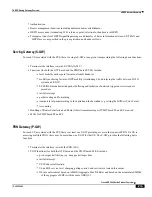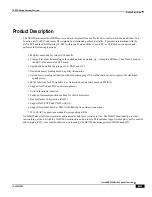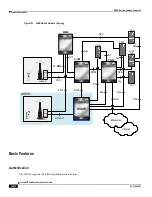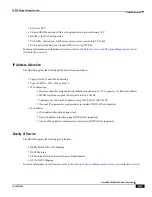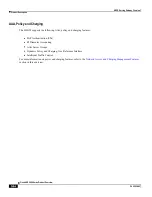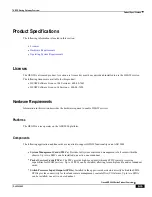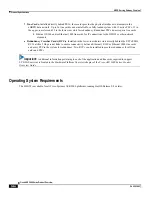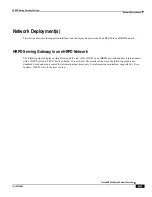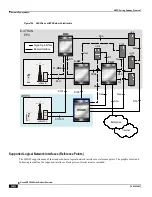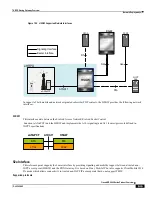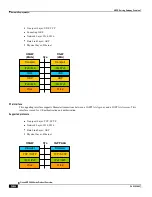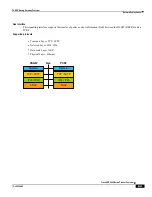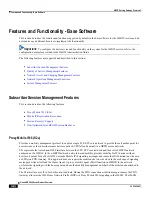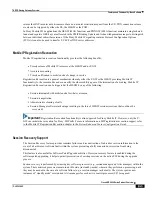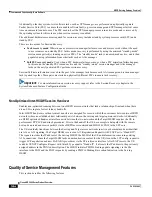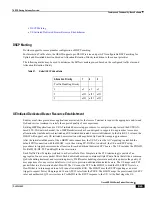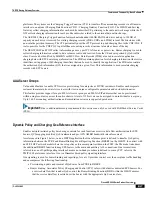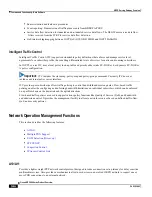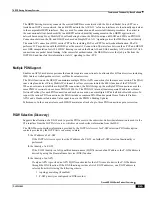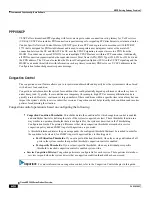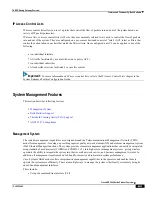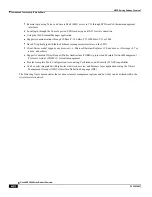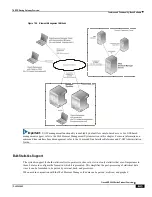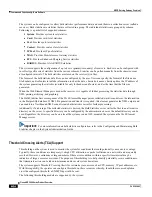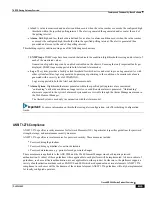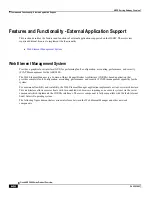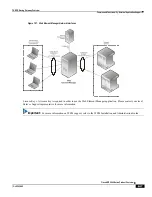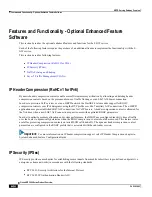
HRPD Serving Gateway Overview
Features and Functionality - Base Software ▀
Cisco ASR 5000 Series Product Overview ▄
OL-22938-02
returns the HNP in router advertisement or based on a router solicitation request from the UE. PDN connection release
events can be triggered by either the UE, the HSGW or the PGW.
In Proxy Mobile IPv6 applications the HSGW (MAG function) and PDN GW (LMA function) maintain a single shared
tunnel and separate GRE keys are allocated in the PMIP Binding Update and Acknowledgement messages to distinguish
between individual subscriber sessions. If the Proxy Mobile IP signaling contains Protocol Configuration Options
(PCOs) it can also be used to transfer P-CSCF or DNS server addresses
Mobile IP Registration Revocation
Mobile IP registration revocation functionality provides the following benefits:
Timely release of Mobile IP resources at the HSGW and/or P-GW
Accurate accounting
Timely notification to mobile node of change in service
Registration Revocation is a general mechanism whereby either the P-GW or the HSGW providing Mobile IP
functionality to the same mobile node can notify the other mobility agent of the termination of a binding. Mobile IP
Registration Revocation can be triggered at the HSGW by any of the following:
Session terminated with mobile node for whatever reason
Session renegotiation
Administrative clearing of calls
Session Manager software task outage resulting in the loss of HSGW sessions (sessions that could not be
recovered)
Important:
Registration Revocation functionality is also supported for Proxy Mobile IP. However, only the P-
GW can initiate the revocation for Proxy-MIP calls. For more information on MIP registration revocation support, refer
to the Mobile IP Registration Revocation chapter in the
System Enhanced Feature Configuration Guide
.
Session Recovery Support
The Session Recovery feature provides seamless failover and reconstruction of subscriber session information in the
event of a hardware or software fault within the system preventing a fully connected user session from being
disconnected.
This feature is also useful for Software Patch Upgrade activities. If session recovery feature is enabled during the
software patch upgrading, it helps to permit preservation of existing sessions on the active PSC during the upgrade
process.
Session recovery is performed by mirroring key software processes (e.g. session manager and AAA manager) within the
system. These mirrored processes remain in an idle state (in standby-mode), wherein they perform no processing, until
they may be needed in the case of a software failure (e.g. a session manager task aborts). The system spawns new
instances of ―standby mode‖ session and AAA managers for each active control processor (CP) being used.
Summary of Contents for ASR 5000 Series
Page 1: ......
Page 26: ......
Page 48: ...New In Release 10 0 SCM Features Cisco ASR 5000 Series Product Overview OL 22938 02 ...
Page 50: ......
Page 58: ......
Page 68: ......
Page 126: ......
Page 138: ......
Page 146: ......
Page 218: ......
Page 236: ......
Page 356: ......
Page 374: ......
Page 422: ......
Page 496: ......
Page 572: ......
Page 654: ......
Page 700: ......
Page 726: ......
Page 784: ......
Page 816: ......
Page 844: ......
Page 906: ......
Page 926: ......
Page 942: ......
Page 943: ...Cisco ASR 5000 Series Product Overview OL 22938 02 Chapter 30 Technical Specifications ...
Page 966: ......
Page 972: ......

